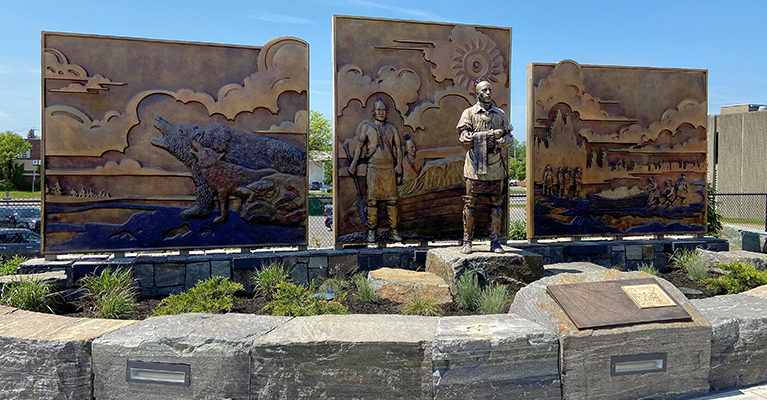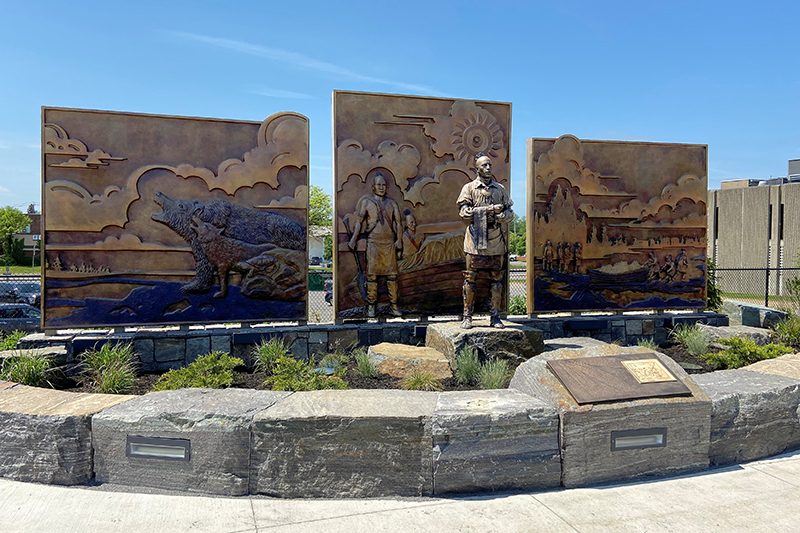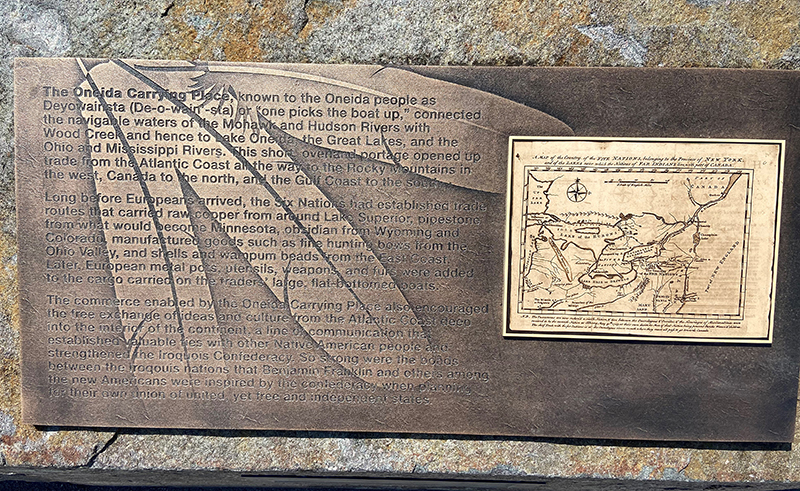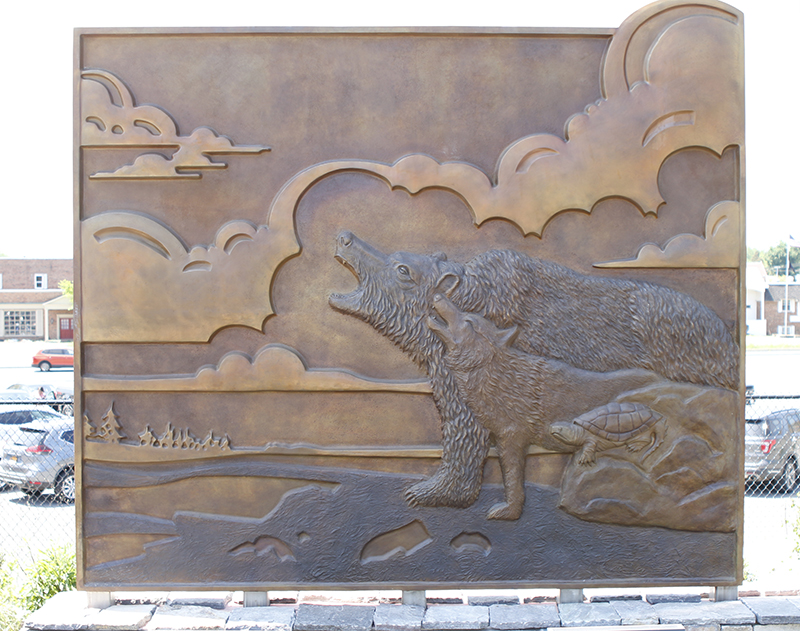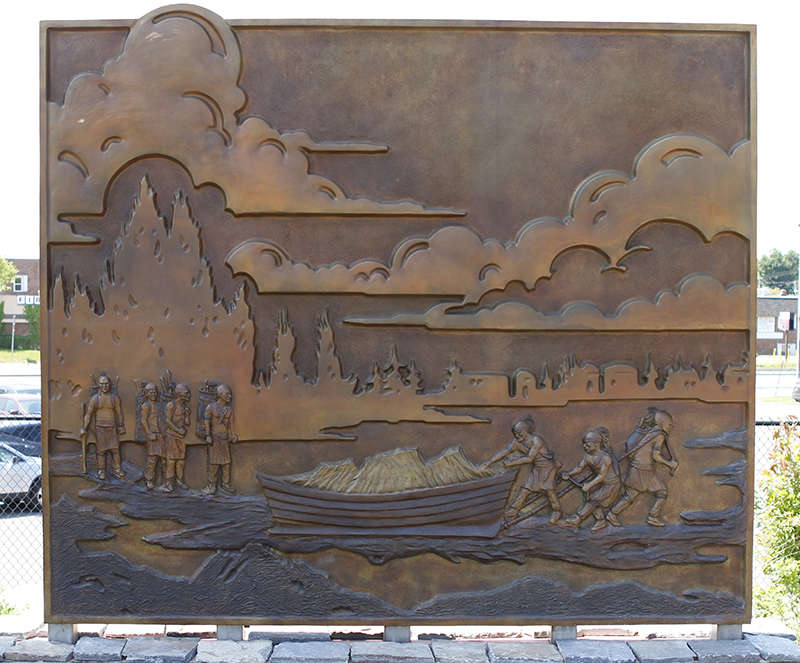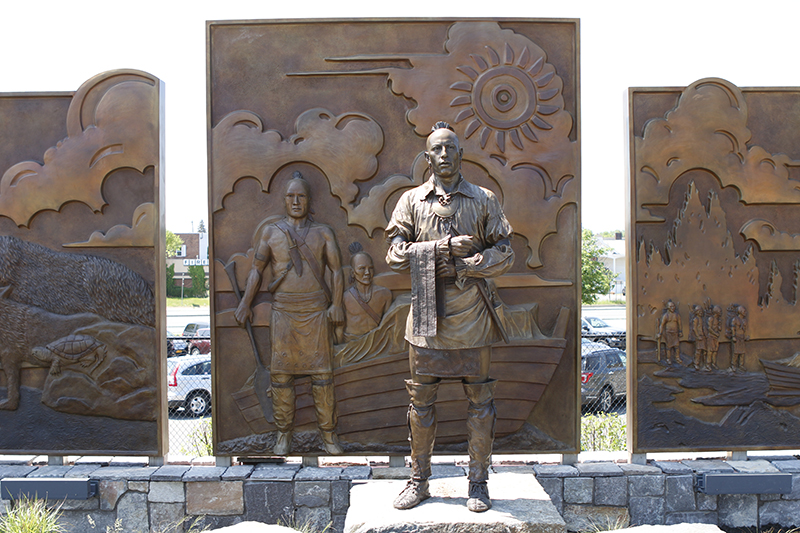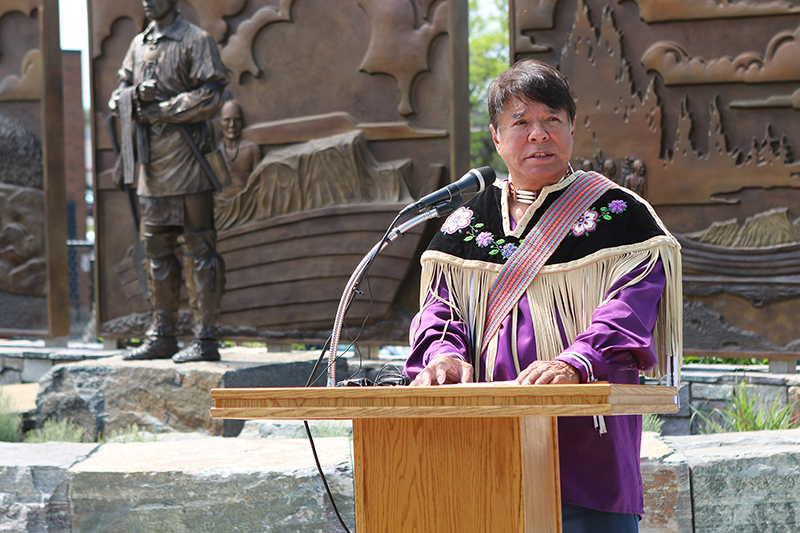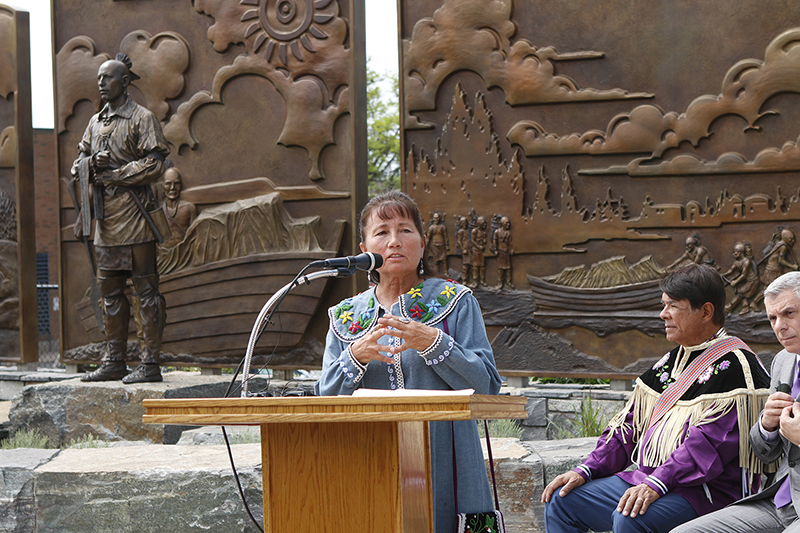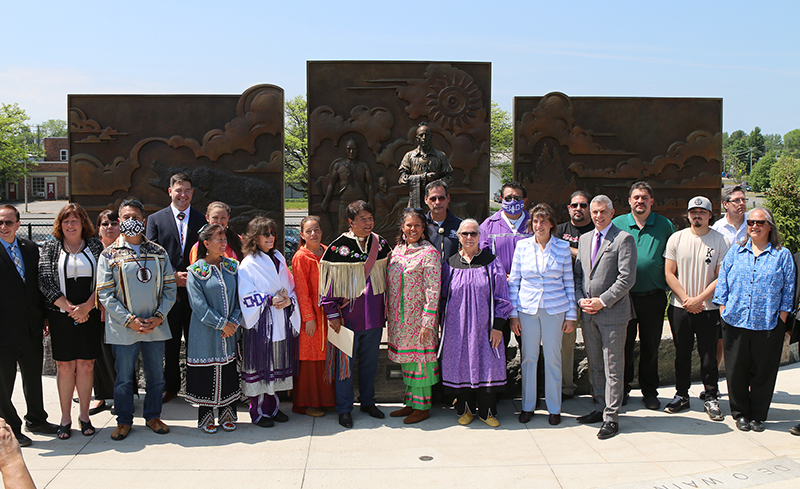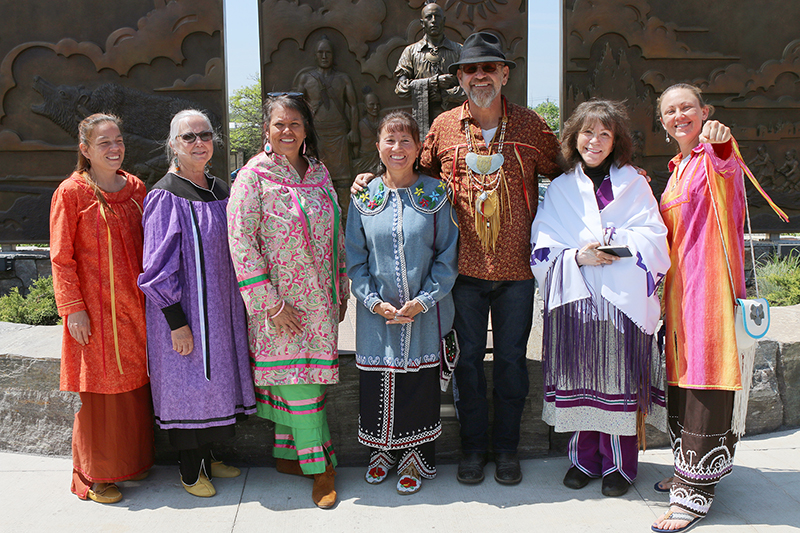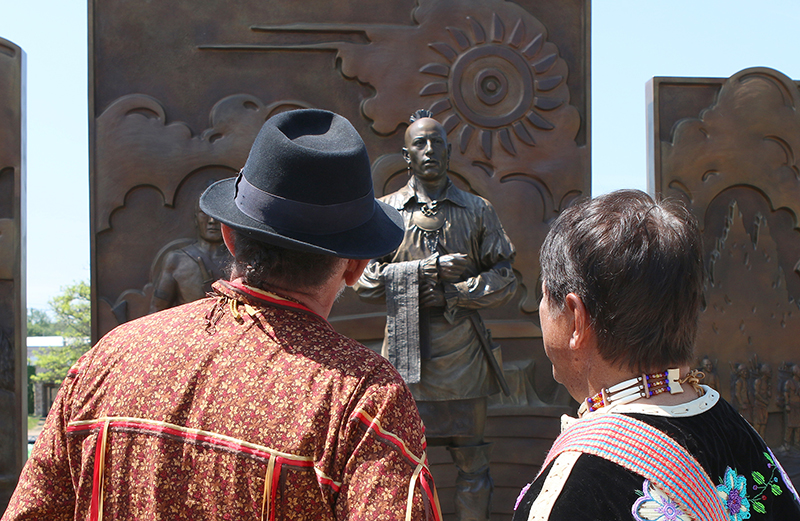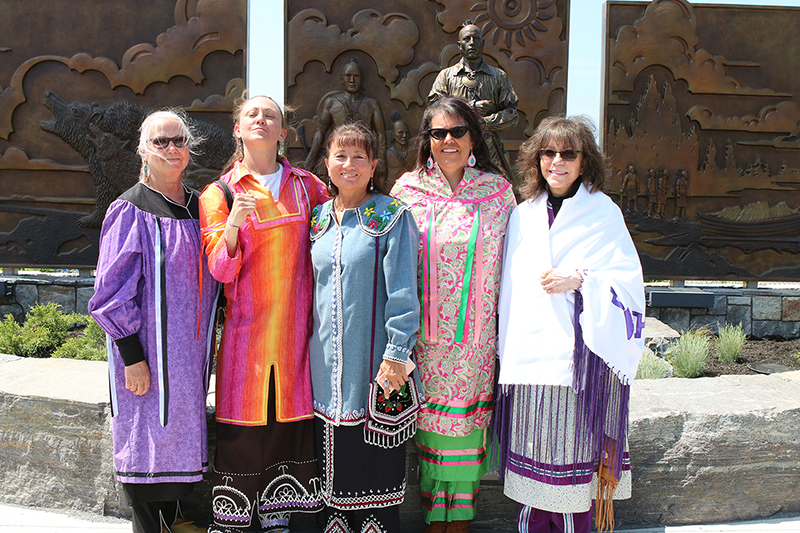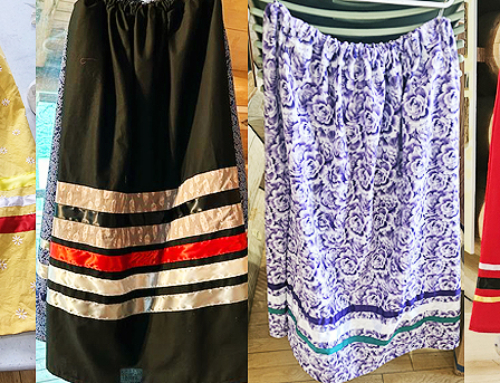The Oneida Indian Nation, together with officials from Oneida County and the City of Rome, recently unveiled a new bronze sculpture and public artwork that commemorates the historic Oneida Carrying Place, a vital mode of transportation, trade and commerce before and during the Revolutionary War. Measuring an impressive 7 feet by 27 feet, the display features three bronze panels behind a life-size bronze sculpture of an Oneida Warrior. Many Oneida Members were present for the dedication. Sheri Beglen (Wolf Clan) presented Oneida words of thanks and greetings.
“Recognizing the contributions and sacrifices of our ancestors is among the most important priorities for the Oneida Indian Nation,” said Nation Representative Ray Halbritter during remarks given during the dedication. “As we continue to make strides in creating a truly inclusive community, this beautiful tribute will remind us to never forget our collective past and help visitors learn about the role this region played in the founding of the country.”
The Oneida Carrying Place played an integral role in the success of the Americans in the Revolutionary War. While it was used by the Haudenosaunee well before European settlers arrived, the path became a critical strategic area during the American Revolution when the Oneidas helped the American colonists defend nearby Fort Stanwix from a British siege. The attempted siege failed and the Americans, with their Oneida allies, helped change the momentum of the war.
The monument panels are made of copper, this was done specifically to pay tribute to Rome’s distinction as the “Copper City.”
One panel represents the Clans of the Oneida People – Turtle, Wolf and Bear. Another depicts Oneida men physically carrying a boat to shore. The Oneida Carrying Place served as a land bridge between the Mohawk River to the east, and Wood Creek to the west.
The center panel includes depictions of Oneida warriors and of an Oneida leader. The Oneida leader standing in front of the panel, on the stone, is holding a two-row wampum. This belt symbolizes the agreement and conditions under which the Haudenosaunee welcomed the newcomers to this land.
The language on the plaque at the monument reads as follows:
“The Oneida Carrying Place, known to the Oneida people as Deyowainsta (De-o-wain’-sta) or “one picks the boat up,” connected the navigable waters of the Mohawk and Hudson Rivers with Wood Creek, and hence to Lake Oneida, the Great Lakes, and the Ohio and Mississippi Rivers. This short overland portage opened up trade from the Atlantic Coast all the way to the Rocky Mountains in the west, Canada to the north, and the Gulf Coast to the south.
Long before Europeans arrived, the Six Nations had established trade routes that carried raw copper from around Lake Superior, pipestone from what would become Minnesota, obsidian from Wyoming and Colorado, manufactured goods such as fine hunting bows from the Ohio Valley, and shells and wampum beads from the East Coast. Later, European metal pots, utensils, weapons, and furs were added to the cargo carried on the trader’s large, flat-bottomed boats.
The commerce enabled by the Oneida Carrying Place also encouraged the free exchange of ideas and culture from the Atlantic Coast deep into the interior of the continent, a line of communication that established valuable ties with other Native American people and strengthened the Iroquois Confederacy. So strong were the bonds between the Iroquois nations that Benjamin Franklin and others among the new Americans were inspired by the confederacy when planning for their own union of united, yet free and independent states.”
The new bronze sculpture is located at 301 W. Dominick Street in the City of Rome, on a section of the Oneida Carrying Place which leads to Fort Stanwix. This location is to honor the Oneida people for their sacrifices that helped define the history of the United States.


